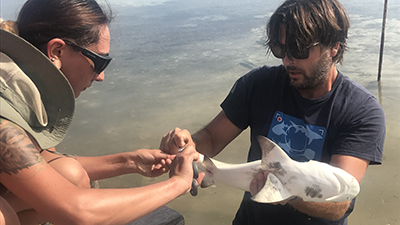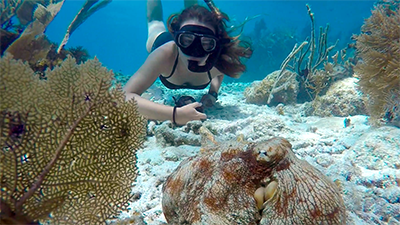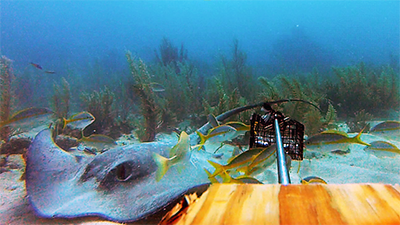プログラム調査日程・空き状況・参加費用等、海外調査に関するお問い合わせは、アースウォッチ・ジャパン事務局にて承ります。info@earthwatch.jp までお気軽にお問い合わせください。
Belize’s barrier reef was once a refuge for sharks, but with the intrusion of fisheries, shark populations have been decimated. Help researchers make the reef a safe haven again by investigating how marine reserves affect shark populations.

Within this well-protected marine reserve, many animals that are rare in fished areas thrive, including groupers, snappers, many species of coral, and sea turtles. But how well do these protected areas safeguard sharks and rays? How long will it take for decimated shark populations to recover with these protections? Join this one of a kind study to help researchers collect data on the integral role sharks and rays play within their ecosystems and the best way to conserve them.
With help from Earthwatchers, Dr. Demian Chapman and his team have already accomplished a lot for the sharks and rays of Belize. They’ve teamed up with fishermen and the government to strengthen shark fishing regulations (shark fins are a prized soup ingredient in some parts of the world), secured protected status for all rays nationwide, and helped increase and improve protected areas for sharks.
These wins have taken their research into an exciting new phase. Join in groundbreaking efforts to monitor shark and ray populations in and around three protected areas, working with shark fishermen employed to tag sharks instead of landing them! Your participation will provide key scientific information need for conservation and it will also directly save thousands of sharks every year by providing an alternative livelihood for shark fishers. Teams will also help track the species of sharks that fisherman catch using fin samples, and will also document the species of rays that populate the waters. Your work will help protect the coral reefs of Belize and the captivating predators that call them home.
From a boat under the Caribbean sky, your team will deploy baited remote underwater video cameras (BRUVs) to learn what’s happening in the water. Teams will catch sharks and rays and apply tags that will allow researchers to track their movements in relation to protected area boundaries– a critical part of assessing how well the protected areas are working. Help save some of the world’s most fascinating creatures, while visiting some of the most beautiful reefs on Earth.
HOW YOU WILL HELP
Each day will begin with an early breakfast, and then half the team will hit the water and half will stay at the field station. Teams will:
.

CATCH AND STUDY SHARKS AND STINGRAYS
Volunteers will fish for bait then set out long lines with biodegradable hooks to catch sharks and rays. The team will then take DNA samples, tag, measure, and implant transmitters before releasing them.

TRACK SHARK AND STINGRAY MOVEMENTS
Snorkel to locate acoustic receivers used for remote tracking and ensure that it is in working order. Along the way, locate and recover stingray and nurse shark tags.

OBSERVE OCEAN LIFE
The team will set up BRUVs (baited remote underwater video cameras) at various spots in shallow water. From the field station, you’ll analyze the video footage to see what sharks, stingrays, and other marine animals are up to.
